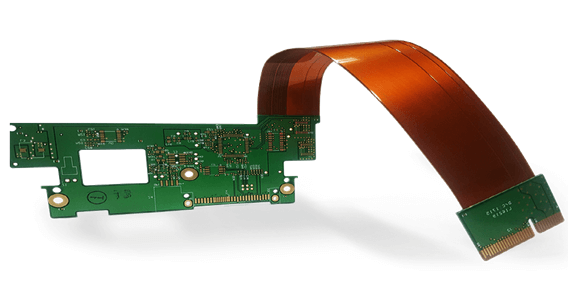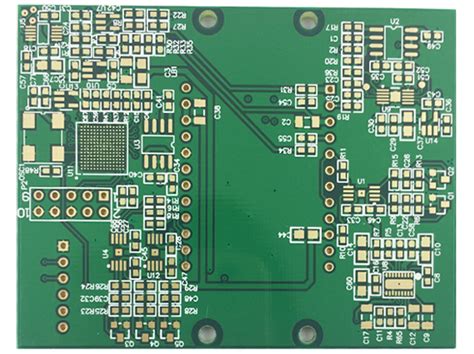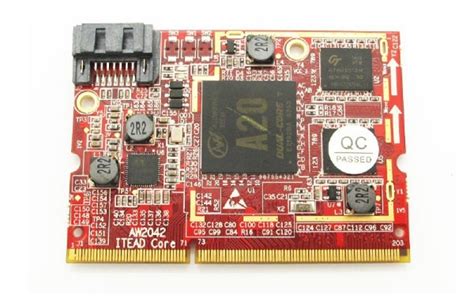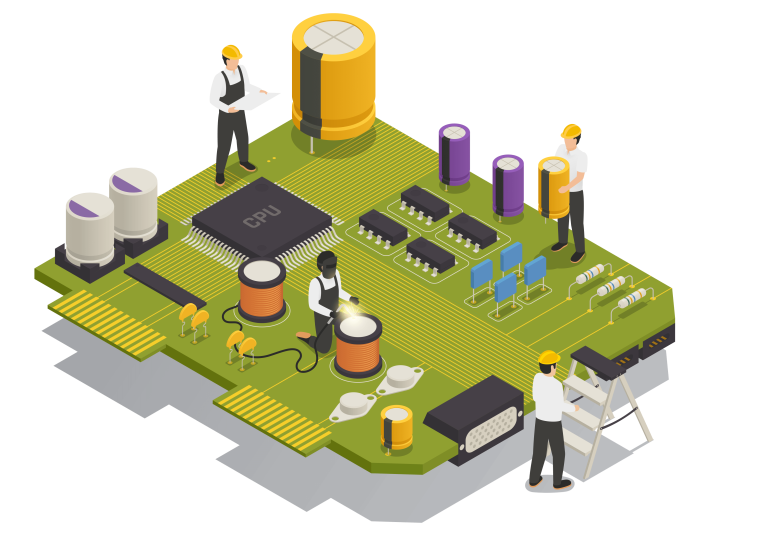Rigid flex pcb cost comparison
Factors Influencing Rigid Flex PCB Cost
When considering the cost of rigid flex PCBs, several factors come into play that can significantly influence the overall expense. Understanding these factors is crucial for making informed decisions and optimizing the cost-efficiency of your PCB design and manufacturing process.
One of the primary determinants of cost is the complexity of the design.
Rigid flex PCBs, by their nature, combine both rigid and flexible substrates, which can complicate the manufacturing process. The more intricate the design, the higher the cost due to the increased labor and precision required.
Material selection is another critical factor.
The choice of materials for both the rigid and flexible parts of the PCB can vary widely in cost. High-performance materials that offer better thermal stability, electrical performance, or flexibility tend to be more expensive. Additionally, the thickness and type of copper used in the PCB layers can also affect the cost. Thicker copper layers or specialized copper types designed for high-frequency applications will generally increase the overall expense.
The number of layers in a rigid flex PCB is another significant cost driver.
Multi-layer PCBs are more complex to manufacture and require more materials, which naturally leads to higher costs. Each additional layer necessitates more precise alignment and lamination processes, further adding to the expense. Moreover, the need for vias, especially blind and buried vias, can also escalate costs due to the additional drilling and plating processes required.
Manufacturing yield is an often-overlooked factor that can substantially impact costs.
Higher complexity and tighter tolerances can lead to lower yields, meaning more boards may need to be produced to meet quality standards. This inefficiency can drive up costs, as manufacturers must account for the potential waste and rework. Therefore, designing for manufacturability is essential to keep costs in check.
Another influential factor is the volume of production.
Like many manufacturing processes, economies of scale play a significant role in the cost of rigid flex PCBs. Higher production volumes typically result in lower per-unit costs due to the more efficient use of materials and machinery. Conversely, low-volume or prototype runs can be considerably more expensive on a per-unit basis because the setup costs are spread over fewer units.
The choice of manufacturing partner can also affect the cost.
Different manufacturers have varying levels of expertise, equipment, and processes, which can influence both the quality and cost of the final product. It is essential to select a manufacturer with a proven track record in producing rigid flex PCBs to ensure that you receive a high-quality product at a reasonable cost. Additionally, geographic location can play a role, as labor and operational costs vary significantly around the world.
Lastly, the lead time required for production can influence costs.
Expedited manufacturing processes often come with a premium price tag. If a project requires a quick turnaround, the additional costs for rush services can be substantial. Therefore, planning ahead and allowing sufficient time for standard production processes can help mitigate these additional expenses.
In conclusion, the cost of rigid flex PCBs is influenced by a multitude of factors, including design complexity, material selection, layer count, manufacturing yield, production volume, choice of manufacturing partner, and lead time. By carefully considering each of these elements, it is possible to optimize the cost-efficiency of your rigid flex PCB projects while ensuring high quality and performance.

Rigid Flex PCB vs. Traditional PCB: Cost Analysis
When evaluating the cost implications of Rigid Flex PCBs compared to traditional PCBs, it is essential to consider various factors that influence the overall expenditure. Rigid Flex PCBs, which combine the benefits of both rigid and flexible circuits, offer unique advantages in terms of design flexibility, space savings, and reliability. However, these benefits come at a cost, which can be significantly higher than that of traditional PCBs. To understand the cost dynamics, it is crucial to delve into the specifics of material costs, manufacturing processes, and application requirements.
Firstly, the material costs for Rigid Flex PCBs are inherently higher due to the use of specialized substrates and adhesives.
Traditional PCBs typically use FR4 material, which is relatively inexpensive and widely available. In contrast, Rigid Flex PCBs require a combination of rigid and flexible materials, such as polyimide for the flexible sections and FR4 for the rigid sections. The polyimide material is more costly than FR4, contributing to the higher base material cost. Additionally, the adhesives used to bond the rigid and flexible layers must withstand various environmental conditions, further increasing the material expenses.
Transitioning to the manufacturing process, Rigid Flex PCBs involve more complex and labor-intensive procedures compared to traditional PCBs.
The fabrication of Rigid Flex PCBs requires precise alignment and lamination of multiple layers, which demands advanced equipment and skilled labor. The process includes several stages such as drilling, plating, and etching, each of which must be meticulously controlled to ensure the integrity of both the rigid and flexible sections. This complexity not only extends the production time but also increases the likelihood of defects, necessitating rigorous quality control measures. Consequently, the manufacturing costs for Rigid Flex PCBs are substantially higher than those for traditional PCBs.
Moreover, the design and prototyping phase for Rigid Flex PCBs can be more expensive due to the need for specialized design software and expertise.
Engineers must account for the mechanical stresses and bending requirements unique to Rigid Flex designs, which often necessitates iterative testing and refinement. This iterative process can lead to increased design costs and longer development cycles. In contrast, traditional PCBs benefit from more straightforward design rules and a wealth of established design resources, resulting in lower design and prototyping expenses.
Despite the higher costs associated with Rigid Flex PCBs, their application in specific scenarios can justify the investment.
For instance, in compact electronic devices where space is at a premium, the ability to fold and bend the PCB can lead to significant space savings and enhanced performance. Additionally, Rigid Flex PCBs offer superior reliability in dynamic environments where traditional PCBs might fail due to mechanical stress. These advantages can translate into long-term cost savings by reducing the need for repairs and replacements.
In conclusion, while Rigid Flex PCBs present a higher initial cost compared to traditional PCBs, their unique benefits in terms of design flexibility, space efficiency, and reliability can make them a worthwhile investment for certain applications. The decision to opt for Rigid Flex PCBs should be based on a comprehensive analysis of the specific requirements and long-term benefits, rather than solely on the upfront cost. By carefully weighing these factors, manufacturers can make informed decisions that align with their technical and financial objectives.
Cost-Effective Strategies for Rigid Flex PCB Design
When considering the cost-effective strategies for rigid flex PCB design, it is essential to understand the various factors that influence the overall expense. Rigid flex PCBs, which combine the benefits of both rigid and flexible circuits, offer significant advantages in terms of space-saving, reliability, and performance. However, these benefits come at a cost, and careful planning is required to manage expenses effectively.
One of the primary factors affecting the cost of rigid flex PCBs is the complexity of the design.
More intricate designs with multiple layers and complex routing will naturally incur higher costs due to the increased time and resources required for manufacturing. To mitigate these costs, designers should aim to simplify the design wherever possible. This can be achieved by minimizing the number of layers and optimizing the layout to reduce the need for complex routing. Additionally, using standard shapes and sizes for the PCB can help lower manufacturing costs, as custom shapes often require specialized tooling and processes.
Material selection is another critical aspect that influences the cost of rigid flex PCBs.
The choice of materials impacts not only the performance and durability of the PCB but also its price. High-performance materials, such as polyimide, offer excellent thermal stability and flexibility but come at a premium cost. On the other hand, more affordable materials like FR-4 may be suitable for less demanding applications. By carefully evaluating the requirements of the specific application, designers can select materials that provide the necessary performance without incurring unnecessary expenses.
Manufacturing processes also play a significant role in determining the cost of rigid flex PCBs.
Advanced manufacturing techniques, such as laser drilling and sequential lamination, can enhance the performance and reliability of the PCB but may also increase costs. To achieve a balance between performance and cost, designers should consider the specific needs of their application and choose manufacturing processes accordingly. For instance, if the application does not require the highest level of precision, opting for more conventional manufacturing methods can result in substantial cost savings.
Volume production is another factor that can significantly impact the cost of rigid flex PCBs.
Higher production volumes typically lead to lower per-unit costs due to economies of scale. Therefore, when planning a project, it is beneficial to consider the potential for larger production runs. By negotiating with manufacturers for bulk production, designers can often secure more favorable pricing. However, it is crucial to balance this approach with the risk of overproduction, which can lead to excess inventory and increased storage costs.
Furthermore, collaboration with experienced manufacturers can provide valuable insights into cost-saving opportunities.
Manufacturers with extensive experience in rigid flex PCB production can offer recommendations on design optimizations, material selection, and manufacturing processes that can reduce costs without compromising quality. Engaging with manufacturers early in the design process can help identify potential cost-saving measures and ensure that the final product meets both performance and budgetary requirements.
In conclusion, managing the cost of rigid flex PCB design requires a comprehensive understanding of the various factors that influence expenses. By simplifying the design, selecting appropriate materials, choosing suitable manufacturing processes, considering volume production, and collaborating with experienced manufacturers, designers can develop cost-effective strategies that deliver high-quality rigid flex PCBs. Through careful planning and strategic decision-making, it is possible to achieve a balance between performance and cost, ensuring the successful implementation of rigid flex PCB technology in a wide range of applications.

Material Choices and Their Impact on Rigid Flex PCB Cost
When considering the cost of rigid flex PCBs, one must delve into the material choices that significantly influence the overall expense. Rigid flex PCBs, known for their versatility and reliability, combine the best features of rigid and flexible circuits.
However, the selection of materials plays a crucial role in determining their cost-effectiveness. To begin with, the base materials used in rigid flex PCBs are a primary factor in cost determination. Typically, these PCBs utilize a combination of rigid FR4 and flexible polyimide substrates.
FR4, a glass-reinforced epoxy laminate, is widely used due to its excellent mechanical and electrical properties.
On the other hand, polyimide is chosen for its flexibility and thermal stability. While FR4 is relatively inexpensive, polyimide tends to be more costly, thus impacting the overall cost of the PCB.
Moreover, the copper foil used in the construction of rigid flex PCBs also affects the cost.
Copper is essential for creating conductive pathways, and its thickness can vary depending on the design requirements. Thicker copper layers provide better current-carrying capacity but at a higher cost. Conversely, thinner copper layers are less expensive but may not meet the electrical performance criteria for certain applications. Therefore, striking a balance between performance and cost is crucial when selecting copper thickness.
In addition to the base materials and copper foil, the adhesive materials used to bond the layers together are another cost factor.
Adhesives must provide strong bonding while maintaining flexibility and thermal stability. Commonly used adhesives include acrylic and epoxy-based materials. Acrylic adhesives are generally more flexible and offer good thermal performance, but they can be more expensive than epoxy-based adhesives. Epoxy adhesives, while cost-effective, may not provide the same level of flexibility and thermal resistance as acrylics. Thus, the choice of adhesive material can influence both the performance and cost of the rigid flex PCB.
Furthermore, the complexity of the PCB design also plays a significant role in material costs.
More intricate designs with multiple layers and complex interconnections require additional materials and processing steps, leading to higher costs. For instance, a design with numerous vias and through-holes necessitates more drilling and plating, which increases both material usage and labor costs. Additionally, the need for precise alignment and registration in multilayer designs can further escalate costs due to the increased manufacturing complexity.
Another aspect to consider is the surface finish applied to the PCB.
Surface finishes protect the copper traces from oxidation and provide a solderable surface for component attachment. Common finishes include HASL (Hot Air Solder Leveling), ENIG (Electroless Nickel Immersion Gold), and OSP (Organic Solderability Preservative). HASL is cost-effective but may not be suitable for fine-pitch components due to its uneven surface. ENIG, while providing a flat and reliable surface, is more expensive due to the use of gold. OSP is a middle-ground option, offering good solderability at a moderate cost. The choice of surface finish thus directly impacts the material cost of the rigid flex PCB.
In conclusion, the cost of rigid flex PCBs is heavily influenced by the selection of materials, including base substrates, copper foil, adhesives, and surface finishes. Each material choice involves a trade-off between performance and cost, and careful consideration is required to achieve an optimal balance. By understanding the impact of these material choices, designers and manufacturers can make informed decisions to manage costs while ensuring the desired performance and reliability of rigid flex PCBs.






